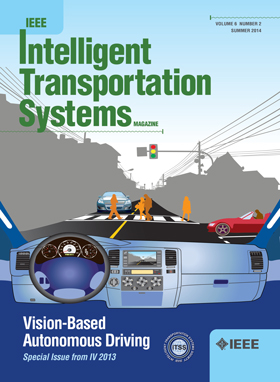Identifying Users Transferring Between Transportation Modes: A Stable Matching Approach
IF 7.9
1区 工程技术
Q1 ENGINEERING, CIVIL
IEEE Transactions on Intelligent Transportation Systems
Pub Date : 2025-02-10
DOI:10.1109/TITS.2025.3536632
引用次数: 0
Abstract
Travel data containing personal identification information needs to be anonymized before being shared and analyzed for privacy considerations. While this approach protects personal privacy, it makes it difficult for researchers and planners to identify the same traveler from different databases and to construct complete multi-modal trips, which greatly reduces the value of data. To address this challenge, this paper develops TBLink, a method to match individual travelers between different modes. The underlying idea is that if a traveler makes a transfer, the spatiotemporal signatures of the previous and next trips will be similar and must satisfy certain conditions. When this pattern occurs for two travelers in the two datasets repeatedly, we can infer that the two travelers are actually the same person. The matching of travelers is regarded as a stable matching problem, and the Gale-Shapley algorithm is used to solve the problem. TBLink is demonstrated using metro and bus trip data from Chengdu City between January and March 2021. The results show that the precision, recall, and recovery rate of user matching are 80.83%, 92.82%, and 10.56% respectively, and the matching is more reliable as the dataset increases. Sensitivity analysis is performed to study the effect of several model parameters on the matching performance.求助全文
约1分钟内获得全文
求助全文
来源期刊

IEEE Transactions on Intelligent Transportation Systems
工程技术-工程:电子与电气
CiteScore
14.80
自引率
12.90%
发文量
1872
审稿时长
7.5 months
期刊介绍:
The theoretical, experimental and operational aspects of electrical and electronics engineering and information technologies as applied to Intelligent Transportation Systems (ITS). Intelligent Transportation Systems are defined as those systems utilizing synergistic technologies and systems engineering concepts to develop and improve transportation systems of all kinds. The scope of this interdisciplinary activity includes the promotion, consolidation and coordination of ITS technical activities among IEEE entities, and providing a focus for cooperative activities, both internally and externally.
 求助内容:
求助内容: 应助结果提醒方式:
应助结果提醒方式:


